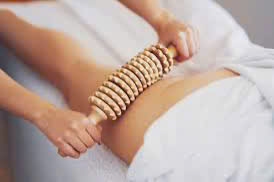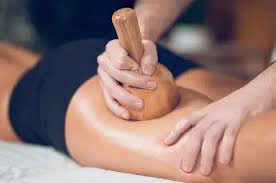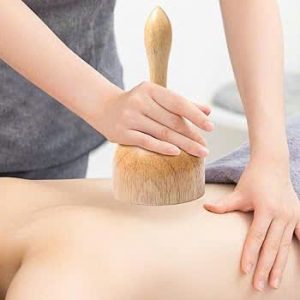Lymphatic Drainage Massage: top 5 Benefits & How It Works
Lymphatic drainage massage has gained significant popularity in recent years as a natural and effective technique to promote overall health, enhance beauty, and support recovery. Whether you’re interested in detoxification, reducing swelling, or simply enjoying relaxation, understanding what this massage entails is essential. This comprehensive guide delves into what is lymphatic drainage massage, how it works, its top benefits, and how it differs from other similar therapies like slimming massage.
In this article, we will explore the depths of lymphatic drainage massage, providing insights that are both scientifically grounded and practically relevant. We aim to clarify misconceptions, highlight advantages, and help you decide whether it’s a suitable addition to your wellness routine.

Lymphatic Drainage Massage
Lymphatic drainage massage is a specialized therapeutic technique designed to stimulate the lymphatic system, an integral part of the immune and waste removal systems in our bodies. The lymphatic system consists of a network of vessels, nodes, and organs that work tirelessly to cleanse and maintain bodily fluids.
This form of massage involves gentle, rhythmic movements that encourage the flow of lymph—clear fluid that contains white blood cells—throughout the body. Unlike traditional massages that often focus on muscle manipulation, lymphatic drainage emphasizes soft, precise strokes aimed at enhancing the body’s natural detoxification processes.
Understanding this therapy requires recognizing its holistic approach to health, emphasizing lymphatic health as a foundation for immunity, skin vitality, and overall well-being. As we explore further, you’ll see how what is lymphatic drainage massage plays a vital role in supporting these functions.
Importance of the Lymphatic System
The lymphatic system’s primary function is to transport lymph, which carries immune cells, nutrients, and waste products. When functioning optimally, it helps protect against infections, remove toxins, and maintain fluid balance.
However, factors such as poor diet, sedentary lifestyle, stress, illness, or injury can impair lymphatic flow, leading to swelling, sluggishness, and other health issues. Lymphatic congestion manifests visibly through swollen limbs, puffy eyes, or skin dullness, and can contribute to conditions like lymphedema or cellulite.
Therapies like lymphatic drainage massage serve to address these issues by promoting a more efficient lymphatic circulation. This not only improves physical appearance but also bolsters the immune response, offering a holistic benefit to health.
How Popular Is Lymphatic Drainage Massage?
Over the last decade, lymphatic drainage massage has moved from niche spa treatments to mainstream wellness practices. Celebrities and athletes have endorsed its benefits, citing faster recovery times and enhanced complexion as key reasons for their preference.
Moreover, medical professionals increasingly recognize its value in post-operative care, especially after surgeries involving lymph node removal, such as breast cancer treatments. Spa clinics and holistic centers now routinely incorporate lymphatic drainage techniques into their service offerings, emphasizing its safety and efficacy.
The rise in awareness underscores a growing understanding that lymphatic health is central to overall vitality. People are seeking natural, non-invasive methods to support their body’s detox pathways, making what is lymphatic drainage massage a crucial topic for anyone interested in holistic health.

Common Techniques and Tools Used
Lymphatic drainage massages are characterized by light, precise strokes rather than deep tissue work. Practitioners use their fingertips, palms, or specialized tools to gently stimulate lymphatic vessels.
Techniques include:
- Rhythmic circular motions around lymph nodes.
- Gentle pumping movements along lymphatic pathways.
- Slow, deliberate strokes that follow the natural flow of lymph.
- Use of light pressure to avoid collapsing fragile lymphatic vessels.
Some therapists may employ additional tools such as jade rollers or gua sha stones to enhance effectiveness, especially in facial lymphatic drainage. These tools complement manual techniques by providing consistent pressure and facilitating lymph movement.
The choice of tools and specific movements depends on individual needs, the area being treated, and whether the client is undergoing therapy for cosmetic or medical reasons. Overall, the key is gentleness and precision, ensuring stimulation without causing discomfort.
What is Lymphatic Drainage Massage
What is lymphatic drainage massage? It is a therapeutic modality designed to activate and stimulate the lymphatic system through gentle, rhythmic massage techniques. Its core goal is to enhance lymph flow, facilitate detoxification, and improve immune function.
Unlike conventional massages that target muscles and tissues with firm pressure, this technique emphasizes softness and finesse, focusing on lymph nodes and channels. It is often performed by trained therapists who understand the anatomy of the lymphatic system intimately.
This practice can be both a standalone treatment or part of broader wellness or medical protocols. It is suitable for individuals seeking natural detoxification, those recovering from surgery, athletes wanting faster recovery, or anyone aiming to boost lymphatic health.
Furthermore, what is lymphatic drainage massage is not just about aesthetics; it sustains long-term health by preventing congestion, supporting immune surveillance, and maintaining fluid balance.

Medical and Cosmetic Applications
What is lymphatic drainage massage used for in medical contexts? It is frequently prescribed for managing lymphedema—a condition where lymph fluid accumulates due to lymphatic obstruction, often following cancer treatments. For such patients, regular lymphatic drainage sessions reduce swelling, alleviate discomfort, and prevent skin infections.
In cosmetic applications, lymphatic drainage is popular for reducing puffiness, improving skin tone, and combating cellulite. Many users find that regular sessions lead to a healthier glow, smoother skin, and a sense of well-being.
The technique is also employed post-surgery or post-injury to accelerate healing, minimize bruising, and support tissue recovery. Athletes particularly benefit from quicker recovery times, allowing them to maintain peak performance levels.
DIY vs Professional Lymphatic Drainage
While professional lymphatic drainage massage provides targeted, effective results, some individuals attempt self-massage techniques at home. These often involve gentle tapping, circular motions, or using handheld devices designed to mimic therapist movements.
However, self-treatment has limitations due to lack of anatomical knowledge and the risk of applying excessive pressure. For best results, consulting with a licensed therapist ensures proper technique and safety.
Professionals customize each session based on individual health status, goals, and specific concerns, guaranteeing maximum benefit. Investing in professional therapy is advisable, especially for complex conditions or post-operative care.
How It Works
Understanding how it works involves grasping the intricate relationship between the lymphatic system and body physiology. The process relies on stimulating lymphatic vessels to optimize their natural functions, which are somewhat different from blood circulation.
The method employs rhythmic, gentle strokes—primarily light pressure and slow movements—that mimic the body’s own lymph flow, encouraging movement toward lymph nodes where toxins are filtered. This mechanism ensures that harmful substances are efficiently transported away from tissues and expelled through the body’s detoxification pathways.
In scientific terms, the massage activates lymphangions—the small muscular segments within lymph vessels—that propel lymph when stimulated correctly. This activation enhances lymph formation, reduces stagnation, and promotes waste elimination.
How it works also includes improving circulation in superficial tissues, which allows nutrients and oxygen to reach skin cells more effectively. Increased blood flow supports skin health, elasticity, and repair processes.
Practitioner expertise is critical here; they must gauge the right amount of pressure and sequence movements to maximize lymph flow without causing discomfort or collapse of delicate vessels. Additionally, combining massage with hydration, exercise, and proper nutrition amplifies its efficacy.

The Role of Anatomy and Physiology
The success of how it works hinges on detailed knowledge of human anatomy, particularly the pathways of lymphatic vessels and key lymph nodes. The most common regions targeted include the neck, axillae (armpits), groin, abdomen, and limbs.
A deep understanding of these zones helps practitioners design effective treatment plans tailored to individual needs, whether for detoxification, edema reduction, or aesthetic purposes.
Physiologically, the lymphatic system operates under low pressure—relying mainly on body movements, muscle contractions, and external stimuli (like massage) to circulate lymph. This explains why gentle, consistent strokes are preferred over vigorous manipulations.
By assisting this naturally sluggish system, how it works aims to restore balance, ensuring that waste removal is efficient and that immune cells are properly distributed throughout the body.
Scientific Evidence Supporting Its Efficacy
Multiple studies confirm the beneficial effects of lymphatic drainage massage. Research indicates improvements in immune markers, reductions in edema, and enhanced skin quality following regular therapy sessions.
One notable study found that patients with postoperative swelling experienced significantly decreased limb volume after lymphatic drainage, highlighting its role in medical rehabilitation. Other investigations demonstrated improvements in skin texture, reduced inflammation, and increased feelings of relaxation.
Despite some skepticism in the scientific community due to limited large-scale trials, the consensus remains positive regarding its safety and potential benefits when performed correctly. The physiological basis—stimulating lymph flow through gentle mechanical means—is well established.
Integrating how it works with lifestyle changes—such as increased physical activity, balanced diet, and adequate hydration—further enhances outcomes. As research continues, the potential for wider acceptance and application of lymphatic drainage emerges, promising a valuable tool in holistic health management.
Top Benefits of Lymphatic Drainage Massage
The advantages of incorporating lymphatic drainage massage into one’s wellness regimen are manifold. From improving physical health to enhancing appearance and mental well-being, its benefits are wide-ranging.
Here, we explore the key benefits, supported by scientific findings and anecdotal evidence, to illustrate why this therapy has become a mainstay in many health-conscious circles.
Enhances Detoxification and Immune Function
One of the primary reasons people seek lymphatic drainage massage is to bolster their body’s natural detox processes. By stimulating lymph flow, the massage facilitates the removal of waste products, metabolic toxins, and excess fluids that can accumulate due to various factors.
This enhanced detoxification directly impacts immune function, as lymphocytes and immune cells are transported more efficiently through the lymphatic system. Regular sessions can lead to fewer illnesses, quicker recovery from colds, and improved resilience against pathogens.
Furthermore, the gentle nature of the massage makes it suitable for individuals with allergies or sensitivities who want to support their body’s cleansing pathways without resorting to aggressive detox methods.
Reduces Swelling and Edema
Swelling caused by injury, surgery, or chronic conditions like lymphedema can be uncomfortable and limiting. Lymphatic drainage massage offers a safe, non-invasive solution to manage these issues effectively.
Through targeted, rhythmic strokes, it encourages the movement of stagnant fluid out of tissues, alleviating swelling and pain. This technique is often recommended post-surgery to prevent the development of persistent edema and to speed up healing.
Patients report feeling lighter and more mobile after sessions, and the reduction in swelling often translates into better skin tone and texture. It’s an excellent adjunct therapy for those experiencing chronic fluid retention or seeking relief from the heaviness associated with bloating.
Improves Skin Health and Appearance
Achieving glowing, youthful skin is a common motivation for exploring what is lymphatic drainage massage. One of its most immediate benefits is enhanced skin tone and texture. The increased lymphatic flow helps eliminate toxins responsible for dullness and skin congestion.
Many aesthetic clinics incorporate lymphatic drainage as part of skincare routines, especially before facials or special events. It can reduce puffiness around the eyes, smooth out uneven skin, and diminish the appearance of cellulite by promoting better circulation and waste removal.
Moreover, the massage stimulates collagen production by increasing blood flow, leading to firmer, more elastic skin. Regular treatments can dramatically improve complexion and impart a natural radiance.
Supports Weight Loss and Body Contouring
While what is lymphatic drainage massage isn’t a direct weight-loss method, it plays a significant role in body contouring efforts. The detoxification and fluid redistribution facilitated by the massage can lead to a temporary reduction in measurements and a decrease in bloating.
Many clients notice a slimmer appearance immediately after sessions, primarily due to the removal of excess retained fluids. Over time, combined with healthy diet and exercise, lymphatic drainage can support more permanent shaping and toning.
It’s often used in conjunction with other aesthetic procedures like liposuction or body wraps to optimize results. The massage also helps break down toxins that could hinder natural fat metabolism, thus indirectly supporting weight management goals.
Promotes Relaxation and Stress Relief
Beyond physical benefits, lymphatic drainage massage offers profound mental and emotional relaxation. The gentle, rhythmic strokes induce a calming effect, reducing stress hormones and promoting mental clarity.
Clients frequently report feelings of deep relaxation, improved sleep, and a sense of renewal after sessions. This aspect makes lymphatic massage highly appealing as part of a comprehensive wellness strategy addressing both mind and body.
Additionally, the spa environment, soothing music, and personalized care contribute to an overall experience of rejuvenation—making it an ideal therapy during busy or stressful periods.
Aids Post-Surgical Recovery
Postoperative swelling, bruising, and slow healing are common concerns that lymphatic drainage massage can effectively address. Healthcare providers recommend it as part of recovery protocols to reduce edema, accelerate tissue repair, and minimize discomfort.
By stimulating lymphatic flow, the massage helps clear out inflammatory debris and excess fluids, preventing complications such as infections or persistent swelling. Patients often notice quicker return to normal activities and less pain compared to those who do not undergo lymphatic therapy.
It’s crucial, however, that such treatments are performed by trained professionals familiar with postoperative care guidelines to ensure safety and maximize benefits.
Boosts Circulatory System Efficiency
Efficient circulation is fundamental to health, influencing everything from nutrient delivery to waste removal. Lymphatic drainage massage plays a pivotal role in supporting circulatory health by complementing blood flow.
Although blood circulation primarily relies on the heart, lymphatic flow depends on external stimuli like massage, muscle movements, and gravity. By stimulating lymphatic vessels, the massage ensures that fluids move freely, reducing stagnation and promoting tissue oxygenation.
This improved circulation not only benefits physical health but also enhances skin vitality, healing capacity, and energy levels. Regular lymphatic therapy acts as a natural stimulant, keeping the body’s waste management system working optimally.
Summary of Top Benefits
- Enhances detoxification and immune function
- Reduces swelling and edema
- Improves skin health and appearance
- Supports weight loss and body contouring
- Promotes relaxation and stress relief
- Assists in post-surgical recovery
- Boosts circulatory system efficiency
What is the Difference of Lymphatic Drainage Massage and Slimming Massage
While both therapies aim to improve body aesthetics and health, what is the difference of lymphatic drainage massage and slimming massage lies in their techniques, goals, and physiological impact. Understanding these distinctions helps consumers make informed decisions aligned with their personal health objectives.
Technical Approach and Technique
Lymphatic drainage massage employs very light pressure, slow, rhythmic strokes, and targeted movements to stimulate lymph flow specifically. It is highly gentle, focusing on opening lymph nodes and pathways to enhance detoxification and immune response.
In contrast, slimming massage typically involves deeper, more vigorous kneading, tapping, and friction techniques designed to break down fat deposits, improve circulation, and promote skin tightening. It often targets specific areas prone to cellulite or stubborn fat, with the goal of reshaping the body.
The fundamental difference is the intensity and purpose of pressure—lymphatic massage prioritizes gentle stimulation, while slimming massage may involve firmer manipulations for fat mobilization.
Goals and Expected Outcomes
The primary goal of lymphatic drainage massage is to facilitate detoxification, reduce swelling, and support the immune system. While it may produce temporary slimming effects due to fluid loss, its main focus is health-oriented.
Slimming massage aims directly at reducing fat volume, improving body contours, and diminishing cellulite. It is often part of aesthetic treatments targeting localized fat pockets and overall body shaping.
Therefore, if someone seeks to detox, enhance immunity, or reduce puffiness, lymphatic massage is preferable. If the objective is to slim down specific areas or tighten skin, slimming massage might be more appropriate.
Suitable Candidates for Each Therapy
Individuals with lymphatic congestion, post-surgical swelling, or skin dullness benefit most from lymphatic drainage massage. It is also ideal for those who want gentle, relaxing therapy that supports overall health.
On the other hand, slimming massage suits individuals looking for body shaping, cellulite reduction, or localized fat loss. People with firm, healthy connective tissues are better candidates for these more vigorous techniques, as they can tolerate deeper pressure.
Both therapies can complement each other when integrated into a comprehensive wellness plan, but they serve distinctly different purposes.
Combining Both Methods
In some cases, professionals may recommend combining lymphatic drainage massage with slimming massage for comprehensive results. Starting with lymphatic therapy helps detoxify and prepare tissues for more targeted fat reduction treatments.
This integration offers the benefits of both worlds—detoxification, reduced swelling, and body contouring—creating a synergistic effect that enhances overall health and aesthetic outcomes.https://www.google.com/knowledgegraphshares?client=mobilesearchapp&sca_esv=b028dc8ec1d9dff5&bih=879&biw=428&channel=iss&cs=0&hl=vi&rlz=1MDAPLA_viAE995AE995&v=372.0.765951532&sxsrf=AE3TifM54Yon2BzKzAbwaxh-sMX16CRcag:1750078915591&kgmid=/g/11ldd2b847&q=Thai+massage+-+spa+massage+home+service+downtown+Dubai&shndl=30&shem=lcuae,uaasie&source=sh/x/loc/tile/m1/5&kgs
Conclusion
Lymphatic drainage massage stands out as a holistic, gentle, and scientifically supported therapy that promotes detoxification, reduces swelling, and enhances skin health. Its foundation lies in stimulating the lymphatic system to operate more efficiently, thereby supporting the immune system, improving circulation, and fostering overall well-being. While it shares some similarities with slimming massage, the two differ significantly in technique and primary goals, with lymphatic drainage focusing on detox and immune support, and slimming massage emphasizing fat reduction and body contouring. Incorporating this therapy into your routine can offer profound health benefits, especially when performed by qualified professionals. Ultimately, understanding what is lymphatic drainage massage and how it works enables individuals to make informed choices for their health and aesthetic goals.https://jobedubaispa.com/thai-herbal-compress-massage-2/
